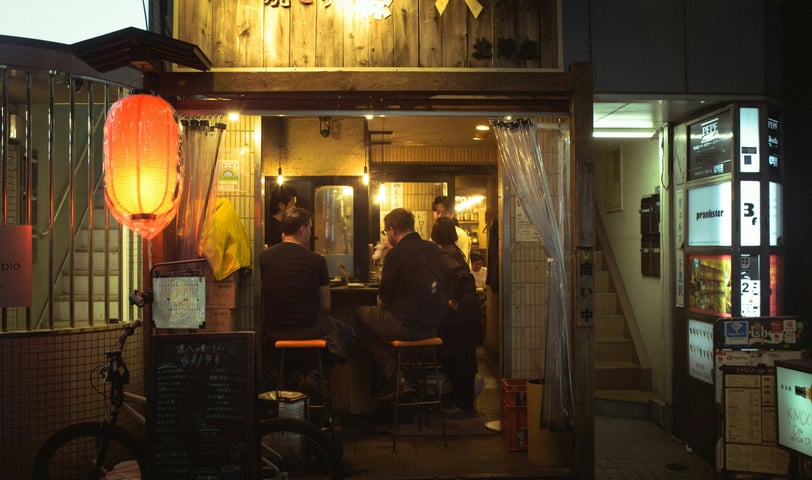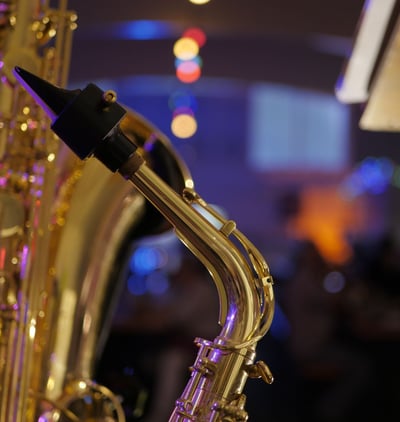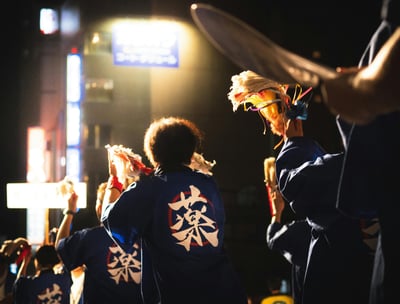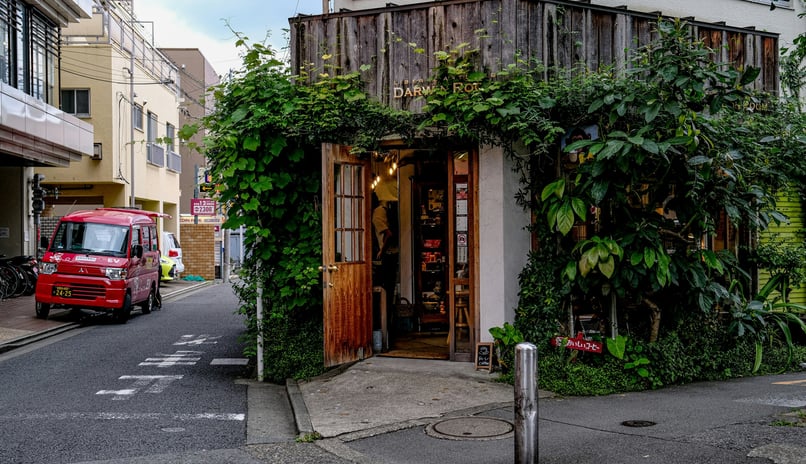The Evolving Spirit of Shimokitazawa: Indie Culture, Café Boom, and Artistic Revival


Shimokitazawa, often referred to simply as "Shimokita," has long been Tokyo’s cultural playground, where vintage fashion, independent theaters, and underground music thrive. This small but vibrant neighborhood in Setagaya Ward has been a magnet for artists, musicians, and free spirits since the postwar era. Today, with ongoing redevelopment and a new wave of creativity, Shimokitazawa is evolving into a modern cultural hub while preserving its bohemian charm.
A Changing Landscape: Balancing Nostalgia and Modernization
In recent years, Shimokitazawa has undergone significant changes, particularly with the redevelopment of its railway system. The once-congested Odakyu train tracks have been relocated underground, making way for new public spaces, shopping areas, and pedestrian-friendly streets. While some feared that modernization would strip the neighborhood of its unique character, it has instead created a dynamic fusion of old and new.
Now, visitors can still wander through narrow alleys lined with secondhand bookstores and thrift shops, but they also encounter sleek, modern cafés and concept stores that cater to the next generation of Tokyo’s creatives. The district remains a haven for those seeking an alternative to Tokyo’s mainstream shopping and entertainment hubs like Shibuya and Shinjuku.


Cultural Highlights: Indie Music, Theater, and Literature
Theater Renaissance: The Return of Small Playhouses
Shimokitazawa has long been a center for avant-garde and experimental theater, with intimate playhouses such as Honda Gekijō and Suzunari Theater serving as launchpads for Tokyo’s most creative playwrights. A recent resurgence in interest has led to new productions focusing on contemporary social themes, attracting younger audiences.
A key event for theater lovers is the Shimokitazawa Theater Festival, held every February, which showcases a mix of classic revivals and bold new works from emerging directors.
Literary and Artistic Resurgence
Bookstores in Shimokitazawa are experiencing a renaissance, with indie shops like B&B (Books & Beer) offering a curated selection of literature and philosophy alongside craft brews. The neighborhood is also home to artist-run galleries and collaborative spaces like Reload, a creative hub where illustrators, photographers, and designers showcase their work.
Live Music and Indie Scene Revival
Shimokitazawa has been Tokyo’s indie music capital for decades, with iconic venues like Shelter and Club Que hosting underground rock, folk, and punk performances. However, as live houses struggled during the pandemic, many feared for the future of the local music scene. Fortunately, 2023 and 2024 have seen a resurgence of independent music, with new venues such as Livehaus and Three gaining traction.
Beyond traditional gigs, Shimokitazawa is also embracing outdoor music events and street performances, with festivals like the Shimokitazawa Sound Cruising bringing together emerging artists and long-time favorites.


The Café Boom: Third-Wave Coffee Culture in Shimokitazawa
Some notable cafés include:
Ballon D’Essai – A minimalist coffee stand known for its pour-over brews and relaxed ambiance.
Coffee Wrights – A specialty roastery offering ethically sourced beans and hand-drip coffee.
Book and Bed Tokyo Café – A hybrid bookstore-café where visitors can sip coffee while reading vintage novels in a cozy, dormitory-style setting.
The neighborhood also plays host to the Shimokitazawa Coffee Festival, an annual event where roasters from across Japan gather to showcase their craft.
The Café Boom: Third-Wave Coffee Culture in Shimokitazawa
While Tokyo has no shortage of stylish coffee shops, Shimokitazawa has become a hotspot for the third-wave coffee movement. The district’s coffee scene is defined by small, independent cafés that emphasize high-quality beans, artisanal brewing techniques, and cozy atmospheres.


Shimokitazawa’s Annual Cultural Calendar
Shimokitazawa Theater Festival (February) – A month-long celebration of indie and experimental theater, showcasing performances from both emerging and established artists. Small theaters and alternative performance spaces host an eclectic mix of productions, ranging from contemporary dramas to avant-garde experimental pieces. This festival solidifies Shimokitazawa’s reputation as a hub for Japan’s underground performing arts scene and offers a rare chance to witness innovative storytelling up close.
For travelers looking to experience Shimokitazawa at its most vibrant, here are some key events to mark on the calendar:
Shimokitazawa Curry Festival (October) – A paradise for food lovers, this festival celebrates the district’s love for curry with special dishes from local restaurants. Over a hundred eateries participate, each offering their unique spin on Japan’s beloved dish. Visitors can grab a festival map and embark on a self-guided culinary tour, tasting everything from traditional Japanese-style curry to international variations infused with spices from India, Thailand, and beyond.
Shimokitazawa Tengu Festival (January) – A traditional event where participants dress as mythical tengu spirits—legendary creatures from Japanese folklore known for their long noses and supernatural abilities—and parade through the streets. The procession, led by costumed performers and accompanied by taiko drumming, blesses local businesses and brings good fortune for the year ahead. The event also features mochi pounding ceremonies and festive street performances, making it a uniquely cultural experience for visitors.
Shimokitazawa Sound Cruising (May-June) – A massive music festival featuring performances across multiple venues, transforming the neighborhood into a dynamic, all-night celebration of sound. Genres range from indie rock and electronic to jazz and experimental music, attracting a diverse crowd of music lovers. With one ticket, attendees can hop between venues, discovering new artists and soaking in the district’s legendary live music atmosphere.
Flea Markets and Vintage Fairs (Year-Round) – Regular events where collectors and fashion enthusiasts can find rare and unique items. Whether searching for retro clothing, vinyl records, handmade accessories, or antique home décor, visitors will always stumble upon something unexpected. The neighborhood’s love for secondhand culture is reflected in these gatherings, which often include live DJ sets, food stalls, and pop-up art exhibitions to enhance the experience.
These annual events capture the essence of Shimokitazawa’s ever-evolving yet deeply rooted cultural identity, making any visit to the district a rewarding dive into Tokyo’s creative and community-driven spirit.


Conclusion: Why Shimokitazawa Matters in Tokyo’s Cultural Landscape
Shimokitazawa continues to defy the rapid commercialization seen in other parts of Tokyo by maintaining its status as a cultural sanctuary. While redevelopment has brought change, the district’s commitment to art, music, and independent businesses ensures that its indie spirit remains intact. Whether it’s through a hidden jazz bar, a secondhand bookshop, or a spontaneous street performance, Shimokitazawa offers a glimpse into a Tokyo that values creativity over conformity.
For travelers seeking something beyond the neon lights and skyscrapers, Shimokitazawa remains one of the most authentic and enriching destinations in the city.
References & Further Reading:
The Japan Times – “How Shimokitazawa is Evolving While Keeping Its Indie Spirit” (2024)
Time Out Tokyo – “Best Cafés and Coffee Shops in Shimokitazawa” (2023)
NHK World – “Theater and Music Revival in Shimokitazawa” (2024)
Lonely Planet Japan – “Tokyo’s Hidden Cultural Neighborhoods” (2024)
Tokyo Cheapo – “Upcoming Events in Shimokitazawa” (2024)
Shimokitazawa’s indie charm is more than just a backdrop—it’s a living, breathing culture woven into every side street and café. To explore how this neighborhood continues to thrive while holding onto its artistic roots, read “Shimokitazawa: Side Streets of Forgotten Tokyo.”
Yet, beyond its vintage shops and underground theaters, Shimokitazawa whispers stories of fleeting moments and hidden encounters. One such tale lingers in the quiet corners of a jazz bar long after the music fades. Discover it in "When the Vinyl Spun in the Rain: A Shimokitazawa Tale."
✉️ Contact:
Curated by TrueTrip Hub |
© 2025 Invisible Atlas — All rights reserved.
Invisible Atlas
Journey Beyond the Visible
invisible.atlas@truetriphub.com
